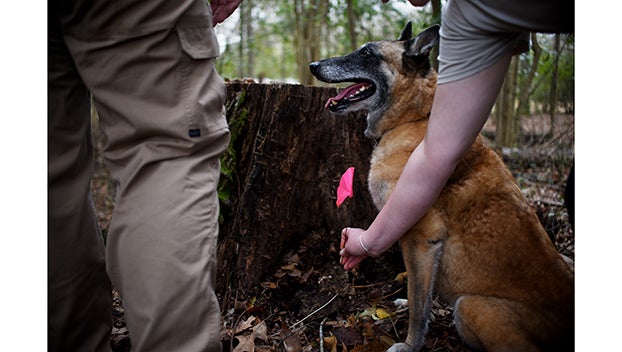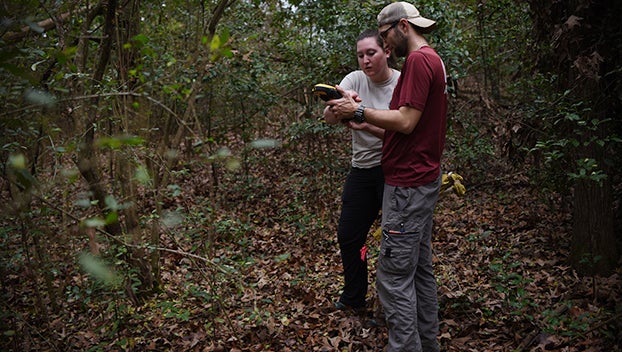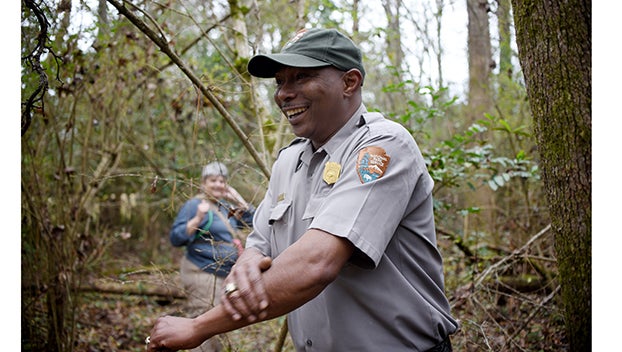The Viewfinder: Archaeologists search for burial site on Melrose property
Published 11:33 pm Wednesday, February 6, 2019
NATCHEZ — Archaeologists have been combing the grounds of Melrose this week in search of burial sites of enslaved people who might have been buried on the grounds.
“We know relatively little about the enslaved at Melrose,” said Cheryl Waldrep, museum curator at Melrose, “so locating or confirming the final resting place will be a significant discovery.”
Melrose is one of the best-known and grandest antebellum mansions in Natchez and is owned by the National Park Service and a key part of the Natchez National Historical Park.
Southeast Archeological Center project archeologists Rusty Simmons and Amelia Jansen have been on the Melrose grounds this week mapping and recording hits left by a human remains detector dog brought in by K-9 Handler Suzi Goodhope, who spent part of the week on the grounds as well.
Kathleen Bond, superintendent of the Natchez National Historical Park said the project is an effort to tell the stories of all people who are a part of Natchez’s history.
“In our efforts to tell the stories of all the people of Natchez,” Bond said, “it’s important to try to figure this out.”
If a gravesite is discovered it could help link descendants to their ancestors, researchers said.
“Doing this work gives the community a bit more involvement,” Simmons said, “and we hope to find descendants through all this and connect those burials with the people who are still here and if the descendants are still here.”
Some of the clues left behind that help shed light on the enslave people living on Melrose are letters dating back from the 1840s, Waldrep said.
The McMurran family who lived at Melrose until 1865 and then the Davis and Kelly family, who lived in Melrose until 1976, left letters referencing a cemetery and mentioning evergreens planted in the area.
“The McMurrans have lost their servant girl Laura,” reads a letter dated 1844 between Eliza Quitman to John Quitman about the McMurrans. “She died on Tuesday last – and was buried at Melrose. Did you know that McM had a graveyard already prepared and planted with evergreens out there.”
Barney Schoby Jr., who has worked at Melrose for eight years, said what the dog hinted at Wednesday confirmed what the late Fred Page who worked at Melrose for 60 years had told him — that the cemetery was in the location being searched Wednesday.
“‘They’re in there, Barney,’ Schoby said. “That’s what I remember him saying to me. ‘They’re somewhere in there,’” Schoby said. “Now that dog is hitting in that arena… and I have chills.”
As of Wednesday, the researchers had obtained no conclusive evidence, and much investigation work remained, they said.
One complication, Goodhope said, is that human remains detecting dogs alert the same way whether a person who died at 2 p.m. the same day as they do for a person who died 200 years ago.
Trees also can carry the sent of a body through their roots, Goodhope said
Given the evidence, Goodhope said, a strong possibility exists the dog hit on the spot where the cemetery is located.
A second dog, Fletch, gave a similar response to the area, Goodhope said.
“I think the important thing is that there is an effort being put forth to identify some of the unknown cemeteries so they don’t get lost in history,” Goodhope said.
The group plans to continue working today including using ground-penetrating radar in the surrounding areas.
For some people there is no doubt that the final resting place of “Laura” and others enslaved at Melrose are beneath the cedar trees.
“They’re here,” Schoby said. “They’re here, and they are here. It’s been documented; it’s been written; the records prove it; the inventory, they are here,” Schoby said. “And when they were put into this ground they were not people, they were property. Finding them today, acknowledging them as such, will alleviate and eliminate all of the aspects of them ever being property again.”








